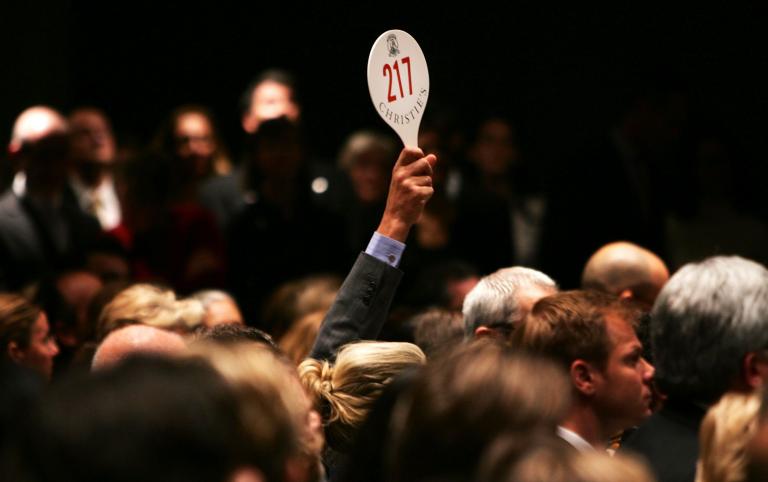VARIATIONS OF THE ART MARKET
March 18, 2021 on News by steve
© Michelle Thompson – Financial Times
As art specialists we are often asked what influences the prices of works and how and who decides of them.
Several factors must be considered. If we are talking about the retail market – mainly works that have never been on the market – official price lists are decided by artists following discussions with gallery owners and / or agents.
Most artists base their price on the surface area of the paintings – XX dollars per square inch or square centimeter (in2/cm2) – but this price will obviously vary when comparing small and large size paintings. Indeed, the price per area of a small painting will necessarily be higher than for a large area in order to normalize prices in general.
For example, if an artist unilaterally decided to sell their works at $ 13.00 per square inch, a small painting measuring 8×10 (80in2) would sell for $ 1,040.00 and a 24×30, (720in2) $ 9,360.00 creating a gigantic price variation.
If we adjust the scale to the size, for example, an 8×10 at $ 13.00 per square inch (80in2) would sell for $ 1,040.00 but a 24×30 (720in2) could be adjusted to, say, 4.86 / in2 to come up with a much more reasonable $ 3,500.00.
This difference will be discussed between the artist and the gallery owner or agent to standardize prices while respecting the integrity of the artist’s work and the purchasing power of the clients.
Finally, another factor will influence the artist’s prices: the sheer volume of their production.
Here too, the law of the market will prevail: supply versus demand.
It’s all about experience, market assessment and, above all, respect for each party.
Obviously, as an artist’s career progresses, their ratings will generally increase and prices will usually follow, but it will remain imperative to always keep the principles of demand, supply and respect in mind.

THE RESALE AND AUCTION MARKET
Much of the explanation elaborated above is based on mathematical principles, logic and, of course, the experience of all involved.
When the time comes to set prices for the resale of works of art, many of these beautiful concepts fall apart because, from that moment on, feelings come into play!
Indeed, what are the criteria that make certain so-called “historical” artists achieve auction records while others, equally talented, will see their stars fade over the years?
One might think it’s all about desirability and demand, but what makes a work by Jean-Paul Riopelle, for example, sell for more than a million dollars but why has an artist like Narcisse Poirier, seen his rating plummet in recent years?
Here, too, the answer is complex. Was the artist well represented? Did the galleries or agents effectively promote the work and the artist both during and after their lives? Is the artist present in various geographic markets? Has the artist’s career run parallel to a movement, a trend, a fashion?
Not to mention that, for the vast majority of artists, the subjects and periods have an impact that can be very important when it comes to evaluating a work.
The art market is extremely volatile and capricious, and everyone has their place in the development of a career.
Both during their life and afterwards, the longevity of an artist often depends on their attitude towards galleries and agents. They are often the ones who put the efforts and investments to make a career fruitful and an artist who decides to bypass these distribution channels risks seeing their career end even during their lifetime.
This is also what makes the role of gallery owners essential for buyers. Dealing with a reputable gallery owner guarantees, at the very least, the legitimacy of the works and a certain stability in the evolution of the market.
What can make the difference between making a good and a bad investment in art?
Of course, an understanding of the art market and trends is essential if you expect your investment to pay off. However, a serious warning should be heeded: judging of an artist’s future value is, at best, a gambit as no one knows the future. Furthermore, artists that have shown a rising value in the recent past are often beyond the reach of ordinary buyers.
This is why there is a golden rule that we have been telling our customers for decades: buy works that you like and that you will love to gaze upon for years to come.
The value of a work depends less on its monetary value than on the feelings it inspires.
Every artwork you take home should be the most beautiful one you have ever seen.
It is an investment in beauty and happiness.
S.M.Pearson, Le Balcon d’art
